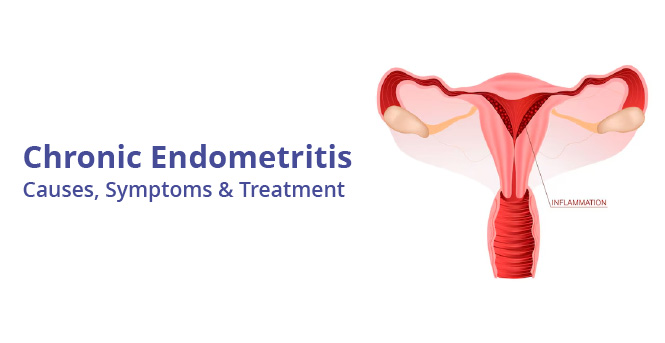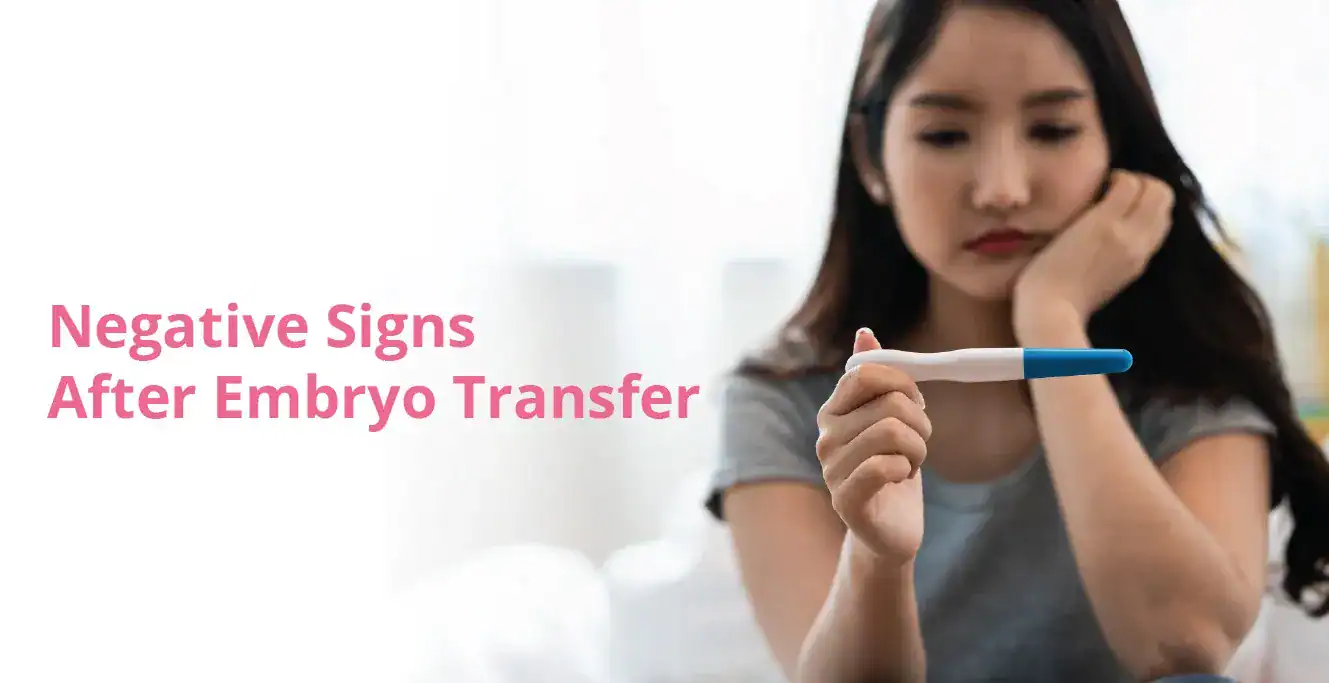
Polypectomy – Can Removing Polyps Improve Pregnancy Chances?

Table of Contents
A polypectomy is a medical procedure used to remove a polyp – an abnormal tissue growth that can develop inside an organ or body cavity.
Polyps can be malignant (cancerous) or benign (non-cancerous). While there are some polyps that disappear on their own, others can develop into cancer if left untreated. It is because of the same why early detection and proper medical evaluation are utmost important. When a polyp is found during a diagnostic test, your healthcare provider may recommend that you have a polypectomy. Let’s understand it in detail:
Why is Polypectomy Performed?
As mentioned earlier, polyps can form in various parts of the body—including the uterus, cervix, nasal cavity, colon, or stomach lining. Polypectomy is performed to remove them. These can be both benign (non-cancerous) and malignant (cancerous) polyps. But removing even the benign one is a necessity. Not being treated at the right time might end up with something complicated, like:
- Increase the risk of cancer
- Cause internal bleeding
- Leads to obstruction
- Hamper the ability of a woman to conceive.
A polyp removal procedure is advised when they are discovered to be suspicious or symptomatic. Let’s know about the symptoms in detail in the next section.
Polyp Symptoms
As we know, polyps are tissue growths. They tend to resemble tiny, flat-looking, or mushroom-like growths with a stalk. They are usually less than half an inch wide. The most common type of polyps develops in the uterus and colon. Other areas where polyps are found are the ear canal, cervix, stomach, nose, and throat. Polyp symptoms completely depend on their location and size. Here’s a rundown of symptoms:
- Colon, large intestine, rectum: constipation, abdominal pain, blood in stool, diarrhoea
- Uterine lining: Vaginal bleeding, irregular menstrual bleeding, infertility
- Cervix: Usually no symptoms. Can result in heavy menstrual bleeding or sexual intercourse, or unusual vaginal discharge
- Stomach lining: Tenderness, bleeding, vomiting, nausea
- Nose or close to sinuses: Loss of smell, nose pain, headache
- Ear canal: Loss of hearing and blood drainage from the ear
- Vocal cords: Voice is hoarse voice in a period of days to weeks
- Bladder lining: Frequent and painful urination, blood in urine
- Gallbladder lining: Bloating, pain in the right abdomen, nausea, and difficulty in eating
Causes of Polyp Growth
One trigger for the growth of polyps is the family history of certain syndromes. Other causes can include inflammation, the presence of a tumour, a cyst, a foreign object, a genetic mutation in the colon cells, long-drawn stomach inflammation, and excess estrogen hormone. Common polyp syndromes include:
- Lynch syndrome: Polyps tend to develop in the colon and can quickly turn cancerous. It can lead to tumours in the breast, stomach, small intestine, urinary tract, and ovaries.
- Familial adenomatous polyposis (FAP): This rare disorder triggers the development of up to thousands of polyps on the colon lining during teenage. It increases the risks of colon cancer
- Gardner’s syndrome: Polyps can develop throughout the colon and small intestine, as well as noncancerous tumours in the skin, bones, and abdomen.
- MUTYH-associated polyposis (MAP): Mutations in the MYH gene cause the development of multiple noncancerous polyps and colon cancer at a young age.
- Peutz-Jeghers syndrome: The body develops freckles all over, including feet, lips, and gums, and noncancerous polyps throughout the intestines, which can become malignant later on
- Serrated polyposis syndrome: It leads to multiple, noncancerous polyps in the early part of the colon, which can turn cancerous over time.
Diagnosis of Polyps
Your medical care provider will perform a number of physical exams and diagnostic tests that can determine the exact location, size, and type of polyp. Imaging tests such as X-rays, ultrasounds, and CT scans are used to confirm the location and size of the polyps. Once the location is confirmed, they will conduct procedures to extract a sample, which will then be tested for malignancy. Here are some of the common procedures for polyp detection and sample collection:
- Esophagogastroduodenoscopy or endoscopy: It is used to extract a sample from the small bowel and stomach.
- Biopsy: Performed on easily accessible areas of the body to collect tissue for further analysis.
- Colonoscopy: Used for sample extraction for polyps in the colon.
- Laryngoscopy: In this, a mirror is held in the back of the mouth to visualise and extract samples of polyps on the vocal cords.
- Nasal endoscopy: Helps examine polyps in the nasal cavity.
- Cold Snare polypectomy: Removal of very tiny polyps of less than 5 mm, to reduce future incidence and mortality rate of colorectal cancer
What Happens Before the Procedure?
- Medical assessment: Before the polypectomy procedure, your entire medical history is evaluated. Post that, the doctor can recommend a couple of imaging tests like MRI, CT scan, or ultrasound. Investigations like hysteroscopy or colonoscopy are performed to locate the exact place where the polyps have formed.
- Counselling: Once the doctor has examined you for polyps, counselling takes place where you are informed about the type of polypectomy that will be performed. Potential risks and benefits will be explained.
- Preparation Steps: Once the type of polypectomy surgery is decided on, you might need to fast to clean your bowel. It can also be done using a laxative or enema. Mostly, this process happens a day before polyp surgery. At times, you will also be advised to avoid certain medications like blood thinners.
What Happens During the Procedure?
- Sedation: Before the surgical procedure starts, you will be given General Anesthesia to be sedated. If it’s a local polypectomy, then there is a chance that you’ll be just mildly sedated. Now, let’s see how polyps are removed.
- Procedure steps:
-
- Colonoscopy polypectomy: In this procedure, a long and flexible tube is inserted through the rectum. This tube has a camera that helps examine the colon. If a polys is found during the examination, it is removed with the help of forceps. Small ones can be snared and cauterised using an electric current, which is also called electrocautery.
- Hysteroscopic polypectomy: When the polyp becomes serious in the uterus, a hysteroscopic polypectomy is performed. In this procedure, the hysteroscope is inserted through the cervix to access the uterine cavity. Specialists use a special surgical instrument to remove the polyp. It is done in a way that allows for precision and minimal tissue damage.
The process generally lasts for 30 minutes to 1 hour. It completely depends on how challenging the case is, i.e., the size and quantity of polyps.
What happens After the Procedure?
- Shifting to the recovery room: Post the procedure, you will be directly shifted to the recovery room for being monitored. There aren’t any side effects as such, but it might take time for the sedation or anesthesia to wear off. You may feel drowsy, bloated, or mildly crampy – this is normal.
- Results and biopsy: The removed polyps are often sent for biopsy to determine if anything was missed during the inspection. It usually takes a week to get the results. If the polyp is cancerous, then your doctor will schedule another appointment to discuss further treatment.
- Follow-Up: Based on the findings, a follow-up colonoscopy or polypectomy may be scheduled to monitor for recurrence, especially if you have a history of colon polyps or a genetic syndrome like familial adenomatous polyposis (FAP).
How Long Does it Take to Recover From Polypectomy?
There are cases in which post-operative care is a must. If you’ve undergone a colonoscopy procedure, you may pass gas or experience minor bloating for several hours post-procedure.
In case a hysteroscopic polypectomy is performed, then you might find light spotting. There can be mild cramping as well. Do not worry about it since it will remain for a day or two minimum. You can resume normal activities in the next 24-48 hours. For more invasive polyp removal surgeries, such as those involving the stomach or bladder, recovery might extend to a week or more.
Treatment of Polyps that Reduce Fertility
The treatment for polyps varies widely depending on the location, size, and type. Once your doctor identifies the exact characteristics, they will recommend the most appropriate course of action. For example, polyps in the throat tend to be harmless and often go away on their own. Rest and voice therapy are recommended to expedite their departure. However, in areas like the colon, uterus, or nasal cavity, the doctor will proceed to surgically remove the polyps to ensure against any risk of becoming cancerous.
The treatment for polyps can vary significantly based on their location, size, and type. Once your doctor determines these characteristics, they will recommend the most appropriate course of action. Removal is typically done as a preventive measure to eliminate the risk of future complications.
Takeaway
Polypectomy surgery is a safe and effective procedure that helps prevent potential complications such as bleeding, obstruction, or cancer. They also play a critical role in improving reproductive health, especially if the polyps is located near the uterus or cervix. Once removed, they increase the chances of natural conception. They also increase the success rate of assisted fertility techniques like IUI or IVF (In vitro fertilisation).
Make sure you consult a fertility specialist who can recommend holistic treatment in line with your fertility goals. To know more about polyps and polypectomy, visit Birla Fertility and IVF Clinic, or book an appointment with Dr. Shilpa Singhal.
FAQs:
- What is a polypectomy?
Polypectomy is the surgical removal of a polyp, a type of tissue growth. The most common types are uterine polypectomies (removal of polyps developed on the uterine lining) and colon polypectomies (removal of polyps developed inside the colon).
- How do I know which type of polypectomy is needed?
It depends on the location of the polyp in the human body, the size, whether it is malignant or benign, as well as the history of cancer in your family. Your medical care provider will determine all the facts and then recommend a course of treatment. This may include a polypectomy, meaning surgery to remove the polyps.
- Can polypectomy increase fertility?
Polyps that grow in the uterus, cervix, and uterine lining increase the chances of infertility as they cause blockages in important processes such as menstruation and fertilisation. Hysteroscopic polypectomy, cervical polypectomy and endometrial polypectomy remove the polyps causing the blockages and hence, increase chances of pregnancy.
- Can polypectomy increase the chances of natural birth?
Yes, it can. However, if natural birth does not occur, a procedure like intrauterine insemination and in vitro fertilisation can be pursued for pregnancy.
Our Fertility Specialists
Related Blogs
To know more
Birla Fertility & IVF aims at transforming the future of fertility globally, through outstanding clinical outcomes, research, innovation and compassionate care.
Had an IVF Failure?
Talk to our fertility experts

 Our Centers
Our Centers
















